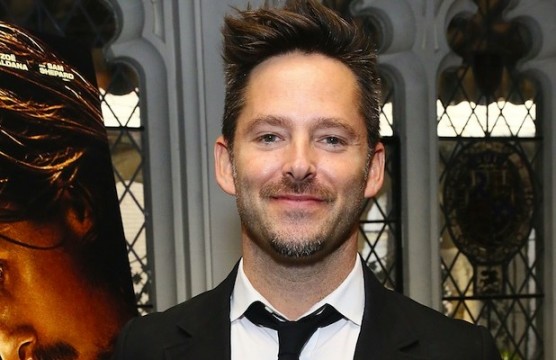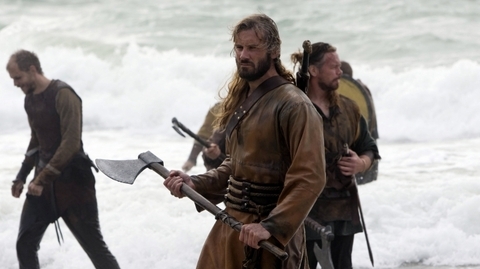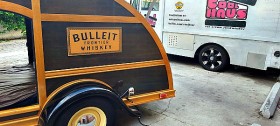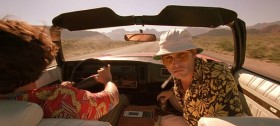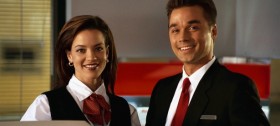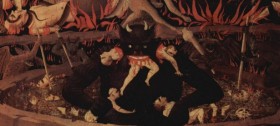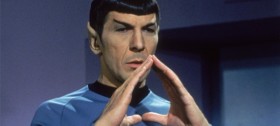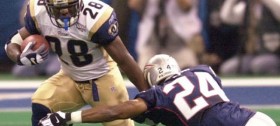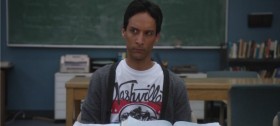Posts tagged fighting

“Out of the Furnace” Director, Scott Cooper Talks about the Film
If you are into films that are gritty and show real life drama than you must have already seen “Out of the Furnace.” If not I suggest you pick it up on Blu-ray or DVD. Scott Cooper directed and co-wrote the screenplay. The film is a tale about a family that just can’t keep its head above water. “Out of the Furnace” has an all-star cast that includes Christian Bale, Casey Affleck, Woody Harrelson, Zoe Saldana, William Dafoe, and Forest Whitaker.
Bale plays the role of Russell Baze, who works all day at the steel mill and then goes home to care for his terminally ill father. To add more stress in his life, his brother Rodney comes back from Iraq from his service in the military. Rodney not wanting to follow his family’s lead by working in the mill starts to enter an underground bareknuckle boxing league. That league is run by a drug dealer played by Woody Harrelson. Russell tries to help out his brother before anything bad can happen. I will stop there so I don’t ruin the film for you, but take my word for it you will be pulled right in as soon as the film begins.
I was lucky enough to talk with Scott Cooper about the film and how his experience as an actor helps him now as a director. Also enter for your chance to win a copy of “Out of the Furnace” on Blu-ray below.
Art Eddy: “Out of the Furnace” has gritty feel to it. You grew up in an area similar to where the film took place. Did you have any knowledge of things like underground fighting that took place where you grew up?
Scott Cooper: I grew up on the coal fields of Virginia. My grandfather was a coal miner. I always knew that kind of blue collar work ethic. I grew up among people like that. I wanted to write and set the story in steel country. There is no better place to do that then in Western Pennsylvania. In particular this town called Braddock, Pennsylvania that I have 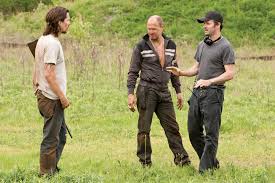 grown very fond of.
grown very fond of.
Just like my protagonist played by Christian Bale, this town also has been beset by this relentless fate. They have had a very, very difficult time. The bareknuckle fighting society can easily just as happen in the lower side of Manhattan, or the Midwest, or Deep South. We all have been some type of gladiators of one nature or another. That is a kind of metaphor for a man who in Casey Affleck’s character who has been trained by the United States government to fight in both Iraq and Afghanistan. So nothing is too literal in its own.
AE: While watching the film it seemed that every character had that moment where they could just lose it. Was that your vision and if so what did you tell the actors to do to create that sense of being volatile?
SC: When you are dealing with actors of this caliber, who truly are the best screen actors that we have here in America, they come in with fully formed opinions and a point of view. They read a script like “Out of the Furnace” and they understand those moments that can best be dramatized.
So you don’t really have to direct them to go to those moments. You want to take them up to that edge before they ultimately explode. That is where it is most exciting. I wanted the film to really be an intense experience from the opening moments with Woody Harrelson in a very public setting in the drive-in that is a relic in its own right all the way through the final frames of the film. I didn’t want it to be going with narrative conventions or otherwise Casey’s character would have been dead on page nine.
AE: Not only do the actors give the viewer a sense of hopelessness, but the way the scenes were shot also has that vibe. Was that something you made sure of while filming the movie?
SC: It was very conscious to me. I have only made two films, but I guess that both of these films are similar. They have this sense of immersive realism and a kind of observational photography. There are many fine directors who are very technically astute and proficient. Yet you realize that you are watching a movie.
I wanted to make it feel like you are watching real life. There is a difference in the way you photograph and stage scenes. The way the actors move and the way they interact. It is just a different style. It is not for everybody. People want a sense of escapism and go see a movie where they can laugh, have fun, and see actors in crazy costumes. I prefer a much truthful and emotionally true experience. Some audiences don’t want to embrace those harsh realities of life. I understand that. If they don’t there are certainly other movies that they can go and see.
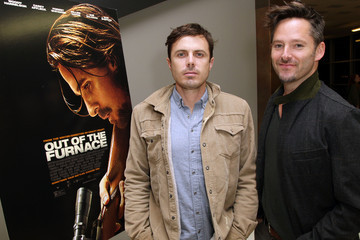 AE: What is the main message you hope the audience takes away from this film?
AE: What is the main message you hope the audience takes away from this film?
SC: I would say resilience. You have a man in Christian Bale’s character who is beset on all sides by this relentless fate. Yet he is able to overcome that. He is based on someone who is very close in my life, who has suffered similarly. He experienced great tragedy and loss, but he was also able to overcome it. He is one of the most positive people I know.
So regardless of how bad it gets he continues to be resilient and positive and is able to get through those tough moments in life.
AE: How did you form relationships with Christian Bale, Woody Harrelson, Zoe Saldana, William Dafoe, Casey Affleck, and Forest Whitaker on set while filming to create a bond with those actors?
SC: It helps that I am also an actor. I understand their language. I understand their preparation. I understand that every actor in that film and mostly every actor that I have worked with is that we are all different human beings with different personalities. They all had different ways of accessing a character. You have to treat each actor separately and differently.
I have such respect and reverence for actors that feel that the performance is the most important thing in a film. As long as they are authentic and emotionally truthful which comes from casting actors who are not afraid to take their own risks. Actors that will push the artistic boundaries. Christian, Casey, Zoe, Woody, and the rest of the cast have done that. They give very human and raw performances as opposed to performances where you often see them acting in a very technical way and what they are doing is artificial.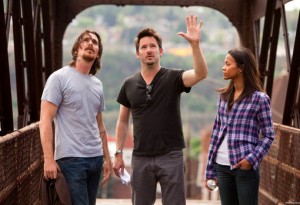
AE: Going along with what you just said about the level of acting I have to say the scene where you have Christian getting out of jail was fantastic. You shot it in a way that people could see his wide range of emotions that he felt on becoming a free man. I just want to say for me that was a tremendous scene.
SC: It is all the things we take for granted. Once you are incarcerated those things go right out the window. You really have to treat each day as if it would be your last and live in the moment. That is the truth. We all have the same fate.
Enter below for you chance to win “Out of the Furnace” on Blu-ray and follow MANjr on Twitter.
Mar 10th

Clive Standen Interview
Clive Standen and his fellow actors on the hit History Channel series “Vikings” are now into their second season. Fans are loving the series and if you have seen the show you know why. Clive plays the role of Rollo Lothbrok, who is the main character’s brother. Rollo is based on the historical figure, who was the great-great-great-grandfather of William the Conquerer.
I was able to talk with Clive about the success of “Vikings,” fans obsession with the crew’s hair extensions, fight choreography, and more.
Art Eddy: Season 2 is now here for “Vikings.” I loved Season 1. You guys got a lot fans of the show. As an actor do you feel more pressure to live up to the hype for this season?
Clive Standen: Oh definitely. The pressure really came from Season 1. We didn’t know if anyone was going to watch it. As soon as we got picked up for Season 2 some of that pressure was taken away. The reason is that you have that faith underneath you. You are riding into battle so to speak. You have a responsibility to get it right. You have to be thankful for the fans because they are the ones that made another season come about.
There are nerves and trepidation obviously, but a lot of it has been okay lets knuckle down and make this story explode. Judging by the first episode this season anyway people will hopefully agree with me and say it is bigger than the first.
AE: Speaking of fans. I see that you do some interaction with fans on Twitter. Do you like having social media as a way to chat with your fans?
CS: I do, but sometimes it can be your worst enemy. (Both laugh.) You can sometimes hear just as many bad comments  as good comments. You can’t please everyone, but it is nice to have that sort of feedback. With social media these days it is good in a sense that you can switch things up a bit if you can get a handle on what people think of it. Producers of the show I am sure listen to everyone’s comments on Twitter. We give people a show that they want to watch. So I think it is a good tool to have.
as good comments. You can’t please everyone, but it is nice to have that sort of feedback. With social media these days it is good in a sense that you can switch things up a bit if you can get a handle on what people think of it. Producers of the show I am sure listen to everyone’s comments on Twitter. We give people a show that they want to watch. So I think it is a good tool to have.
AE: I want to know who is talking bad about the show. (Both laugh.)
CS: It is not necessarily who is talking bad about the show. Some people aren’t a fan of Rollo. I think that sometimes is a good thing. When people say, ‘Rollo is such a whatever,’ I tend to favor those comments. That is what people should be thinking. Hopefully by the end of this season people will feel sorry for Rollo. I think he is going to surprise some people.
AE: Rollo is based on a real historical figure so how much research did you do for the character of Rollo?
CS: I never stop researching any role that I take on. Even if it is not a historical role I try to do everything I can. I need to immerse myself in that world. I like to lose myself. I am still doing that now. Michael (Hirst) can write anything. This world is so unworldly. It is so visceral and fantastical that anything can feasibly happen. Any of these sagas Michael can latch onto and say this is the way we are going to go with an episode.
I want to feel like I am at least ahead of the game. I want to know what I am doing here. I want to be in that world instead of something hitting me from left field. So I am always researching Rollo. What is different from Rangar and Rollo is that Ragnar was a real Viking. He really did live it. A lot of what is documented of him is in the sagas. Some of those are fantastical. They are almost like Arthurian legends.
For Rollo in history books a lot of what happens with him is in France. It is all there. There is so much documented there. He is the great, great, great, great grandfather of William the Conqueror. There is a lineage there that I can draw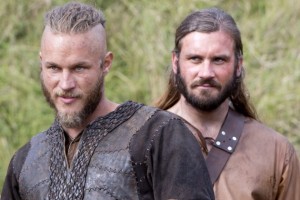 off of.
off of.
AE: Your fighting scenes are intense on the show. I take it your background as a Muay Thai boxer and fencing has helped you out with those scenes.
CS: Definitely, but the people that should be given credit for that is Franklin Henson and Richard Ryan. They are our stunt coordinators. They have worked on films like “Troy” and the modern “Sherlock Holmes” movie with Robert Downey Jr.
We all sat down and talked about things. There are a lot of things on TV and film where the battle scenes look like they are too choreographed. They are almost like a dance. It works for “Lord of the Rings.” He can spin around and do all sorts of things because he is an elf. It is fantasy.
We want to bring the audience into the shield. We want to bring them right into the action. We want to make the audience feel like these characters can die at any minute. It has to be brutal. It is a land of kill or be killed. These characters might not come out of it alive. They are not superheroes. Lagertha (Lothbrok) is not “Xena: Warrior Princess.” She is going to get smacked in the face. If she is going to take on these guys she is going to go down fighting. You got to feel that.
We work on the choreography. We work tirelessly with Richard to kind of choreograph the scenes. When it comes to the day the weather in Ireland is always changing to say the least. What you learn in the comfort of a studio you suddenly are out on the landscape and it is pouring and the mud is up to your shins. You are slipping and sliding. That choreography that you learned on your feet now might be done on your knees. You just carry on. You do not want to be that guy that puts his hand up when there is a 100 stuntmen running around behind you and say, ‘Hey can we do that again?’ You just adapt and overcome.
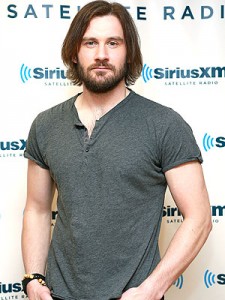 AE: I have been checking out the press for this season. It seems like a lot of people are infatuated about you and your fellow actor’s hair extensions. Did you ever think that would be a topic of conversation for the show?
AE: I have been checking out the press for this season. It seems like a lot of people are infatuated about you and your fellow actor’s hair extensions. Did you ever think that would be a topic of conversation for the show?
CS: I know exactly, but it is also a thing where you are an actor. I am filming a movie called “Everest” at the moment. It is set in 1996. We are all mountain climbers and I had to get my hair cut short for the role.
Sometimes people are like, ‘Whoa.’ “Vikings” is six months of my year and I got the other six months of the year to fill up my calendar. I can’t go around looking like a Hell’s Angel all year. I have to adapt to the character I am playing. The only way around that is to keep my hair long enough to be able to have hair extensions. Otherwise I have become easily typecast as either a Hell’s Angel, a Viking, or an 80’s rock star.
I do understand the questions though. Some people might not understand that some of this stuff is not real. We finished filming this in November of last year. It is very weird when you see a guy and he has long hair and then the next moment he has short hair and then back to having long hair. I understand why it doesn’t add up.
Mar 6th
